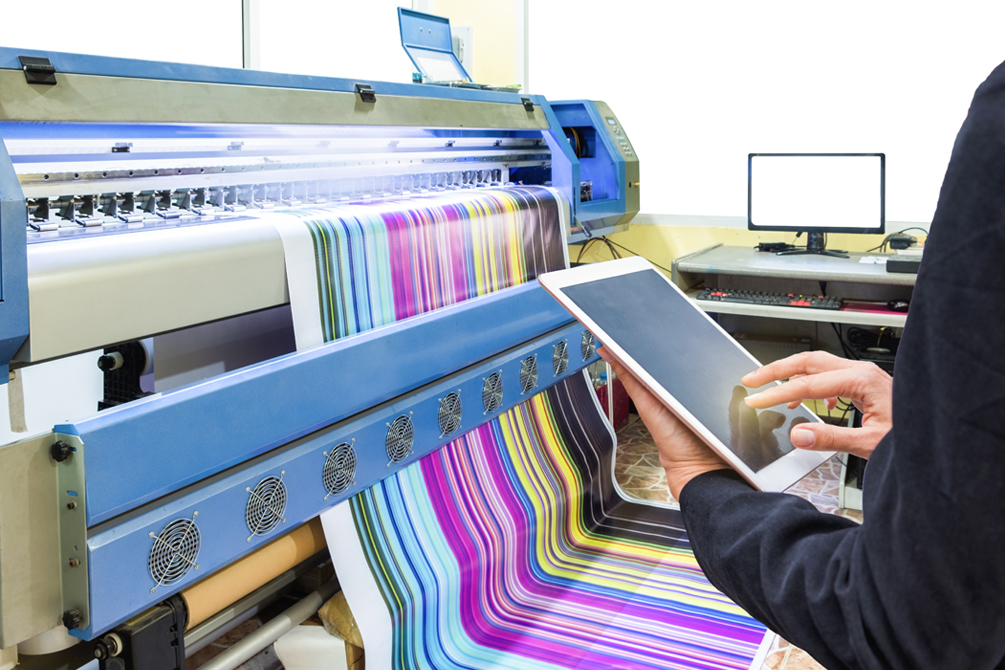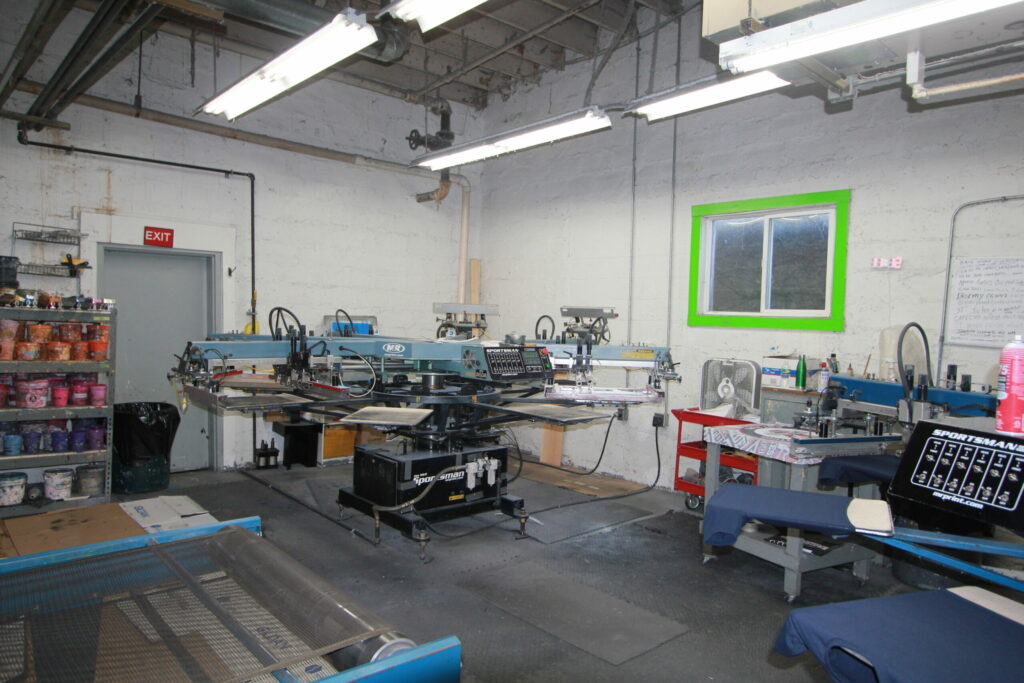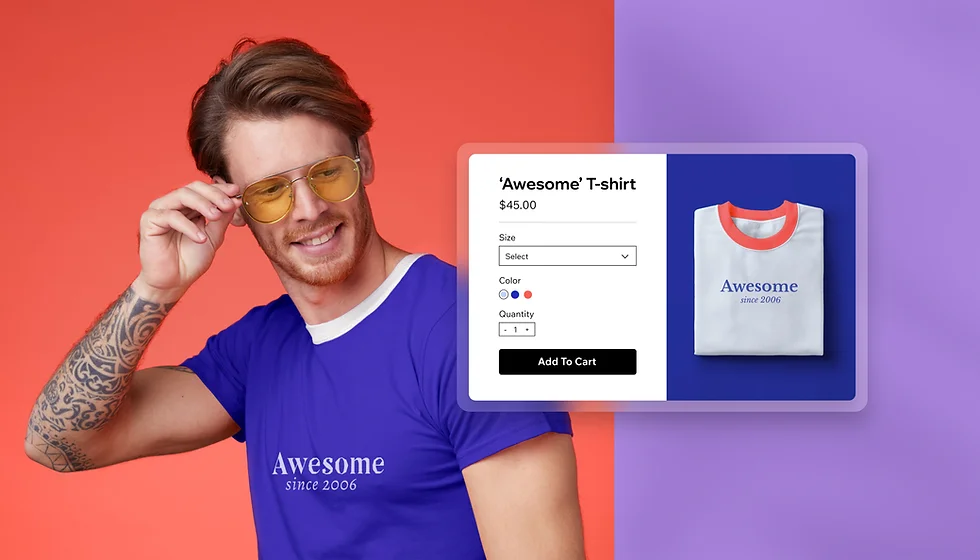
Introduction:
The T-shirt printing business has long been a profitable venture. Especially within the dynamic fashion industry.
Are you someone who finds comfort and style in a T-shirt? Do you dream of diving into the entrepreneurial world?
If so, starting a T-shirt printing business could be the perfect avenue for you.
T-shirt Printing Business – Taking the Start
Embarking on this journey requires:
- Dedication,
- Innovation, and
- A keen understanding of the latest fashion trends.
We will be covering topics such as:
- Market research
- Brand establishment, production,
- Marketing,
- Business growth and more!
Can’t wait to see what we’ve got? This comprehensive guide is your best friend!
Let us take you through the steps of starting a profitable T-shirt printing business!
Researching the T-shirt Printing Business:

Embarking on any business venture requires thorough research. That said, the T-shirt printing industry is no exception either.
Begin by understanding your target market. Understand the various market segments and the competitive landscape.
Understanding the Market Segments:
Dive deep into the diverse nature of the T-shirt printing business. You should consider categories such as:
- Basic T-shirts,
- Designer T-shirts,
- Sports-oriented T-shirts, and
- Promotional T-shirts.
A good understanding of these segments will empower you to craft personalized products. Your own unique product offerings that cater to specific niches.
Identifying the Target Customers for T-shirt Printing Business:
Ask yourself essential questions to identify your target customers. What age group are you targeting? What is the gender breakdown? Are they interested in high-end designer T-shirts or more affordable, plain options? Learn the following about your targeted customers:
- Buying habits,
- Income levels,
- Interests and hobbies
These factors will guide you through the marketing strategies.
Learning About the Competition:

Learn about your competitors! Want to stand out in the crowded T-shirt printing industry? Then try to gain as much comprehensive understanding of your competitors as possible.
Analyze their business models, product offerings, pricing strategies, and marketing tactics. Use this knowledge to identify gaps in the market.
Do this so you can tailor your business strategy to meet the unmet needs of your target customers.
Creating a Business Plan for a T-shirt Printing Business
A well-structured business plan is the foundation of a successful T-shirt printing business. Ensure it includes the following key elements:
- Executive Summary: Summarize your business objectives, market overview, and financial projections.
- Executive Summary: Summarize your business objectives, market overview, and financial projections.
- Business Overview: Detail your business model, T-shirt types, target customers, and pricing strategy.
- Market Analysis: Analyze market segments, target customers, and competition.
- Operations: Describe day-to-day operations, equipment requirements, production processes, labor needs, and quality control.
- Financial Projections: Provide detailed startup costs, operating expenses, revenue projections, and profit margins.
- Risk Analysis: Identify potential risks and outline contingency plans.
- Business Overview: Detail your business model, T-shirt types, target customers, and pricing strategy.
- Market Analysis: Analyze market segments, target customers, and competition.
- Marketing Strategy: Outline how you’ll promote your business, focusing on channels like:
- Social media,
- Email marketing,
- Content marketing, and
- Paid advertising.
11. Operations: Describe day-to-day operations, equipment requirements, production processes, labor needs, and quality control.
12. Financial Projections: Provide detailed startup costs, operating expenses, revenue projections, and profit margins.
13. Risk Analysis: Identify potential risks and outline contingency plans.
Pro tip: Cater to a broad audience by offering diverse T-shirt designs. Experiment with different styles, themes, and trends. Do this to appeal to various tastes within your target market.
Setting Up the T-shirt Printing Business:

choose the right business model. The success of your T-shirt printing business depends on it! It also depends on acquiring the necessary equipment and establishing an efficient workspace.
Choosing the Right Business Model:
Consider options such as:
- Custom T-shirt printing,
- Printing your designs,
- Creating a product line, or
- Selling third-party T-shirts.
Each model comes with its own set of challenges and opportunities. So we recommend you to align your choice with your interests and available resources.
Equipment and Material Requirements:
Invest in reliable equipment such as:
- Computer-design software,
- DTF printers, screen printing machines,
- Direct-To-Garment(DTG) machines,
- Heat press machines,
- Vinyl cutters,
- Drying equipment,
- Specialty ink,
- Transfer paper,
- Squeegees,
- UV light boxes, and
- Transparent film positives.
- Quality equipment ensures high-quality T-shirt production.
Pro tip: Invest in High-Quality Equipment! Put first reliable and high-quality printing equipment. Investing in top-notch DTF printers, screen printing machines, and heat press equipment. Ensure consistent, professional results that enhance your brand reputation.
Setting Up the Business Space:

Create a spacious, well-ventilated, and well-lit workspace that accommodates your equipment and materials. Dedicated storage space for equipment and materials is essential. Assign areas for printing and production. Don’t forget about prioritizing hygiene and safety to prevent contaminants. Foster a productive environment for yourself and your team.
Establishing the Brand:
A strong brand is the face of your business, setting the tone for customer perception and loyalty. Follow these steps to establish a compelling brand identity:
Developing a Brand Identity:
- Identify your target market through thorough market research.
- Develop a unique value proposition that sets your business apart.
- Create a Unique Selling Proposition (USP) that summarizes your value proposition.
- Identify your brand personality, determining the tone, look, and feel.
- Choose your brand language, including the voice of the brand.
Creating a Logo:
- Keep it simple, ensuring memorability.
- Make it relevant to your brand, visual or emotional.
- Choose colors that convey the right feelings and emotions.
- Ensure adaptability across different sizes and platforms.
- Consider seeking professional help for the best results.
Pro tip: Build a Unique Brand Identity! Develop a distinctive brand identity that resonates with your target audience. Develop a:
- Memorable logo,
- Compelling value proposition, and
- Consistent branding across all channels.
Do this, and it’ll contribute to a strong brand presence.
Marketing the Brand:

Once you establish your brand identity, you’re all set to launch marketing campaigns. Through these marketing campaigns, you’ll build awareness and engage your target audience:
Developing a Marketing Strategy:
- Determine the best marketing channels. Social media, email marketing, content marketing, and paid advertising.
Using Social Media:
Leverage platforms like:
- Facebook,
- Instagram, and
- Twitter
Showcase your designs and engage with your audience at a larger scale.
Leveraging Email Marketing:
- Collect customer email addresses and create personalized campaigns. With this information, you’ll get to promote your products, designs, and brand updates.
Giveaways and Promotions:
- Use promotions to encourage customer interaction and loyalty. Giveaways and promotions are powerful tools to engage customers. They can help you create brand awareness. They are also great for boosting sales in your T-shirt printing business.
Participating in Events:
- Attend local events, trade shows, and community gatherings to boost brand awareness.
Pro tip: Diversify Your T-shirt Designs! Cater to a broad audience by offering diverse T-shirt designs. Experiment with different styles, themes, and trends. Do this to appeal to various tastes within your target market.
Designing and Producing T-shirts:
The core of your business lies in designing and producing high-quality T-shirts. Apparel that resonates with your target audience.
Consider the following factors:
Types of T-shirt Designs:
- Humorous designs for a light-hearted touch.
- Graphic designs featuring bold images and typography.
- Sports or activity-themed designs catering to specific interests.
- Inspirational designs focusing on positive messages.
Learning About T-shirt Production Techniques:
- Screen printing involves pressing ink onto the garment through a mesh screen.
- Direct-to-garment printing (DTG) uses an inkjet printer to print directly on the T-shirt.
- Heat transfer printing transfers designs to the paper and then onto the T-shirt with heat.
- Vinyl printing involves cutting designs from vinyl sheets. Then, transfer them by heat pressing.
Quality Control and Testing:
- Test printed samples to ensure design accuracy and consistent ink quality.
- Ensure proper ink curing and drying.
- Conduct wash tests to verify design and ink quality post-washing.
- Inspect for defects, blemishes, or inconsistencies.
Marketing and Selling the T-shirts:
Effective marketing and sales strategies are super important! They are essential to showcasing your T-shirts to the world.
Explore the following:
- sales channels,
- set up an online store, and
- launch strategic marketing campaigns.
Researching T-shirt Sales Channels:

- Explore online marketplaces such as Amazon, Etsy, and Redbubble.
- Consider opening a physical storefront for those who prefer in-person shopping.
- Use pop-up shops during events or holidays.
- Leverage social media for broad audience reach.
Setting Up an Online Store:
- Choose an e-commerce platform that suits your needs. You can use platforms such as Shopify, Wix, WooCommerce, or Squarespace.
- Design an appealing, easy-to-use store layout showcasing your products and prices.
- Upload product details, images, prices, and descriptions.
- Set up payment and shipping options to provide flexibility to customers.
Launching Social Media and Email Marketing Campaigns:
- Create and customize social media profiles for brand consistency.
- Post frequent updates on social media with product showcases, promotions, and discounts.
- Use email marketing to target customers in a direct manner. With personalized, striking, appealing campaigns.
Managing and Growing the Business:
As your business gains traction, manage the following:
- Inventory,
- Tracking sales and expenses, and
- Scaling up becomes a critical component of success.
Managing Inventory and Production:
- Maintain meticulous inventory records using software or spreadsheets.
- Forecast demand based on past sales records.
- Reorder well in advance to prevent stockouts.
- Consider automating certain production processes to save time and reduce costs.
Tracking Sales and Expenses:
- Use accounting software like QuickBooks, Xero, or Wave.
- Record all business-related expenses with proper documentation.
- Be regular in reviewing financial statements to assess business performance.
Scaling up the Business:
- Identify growth opportunities, whether through new product lines, target markets, or sales channels.
- Increase your production capacity. Do this by investing in new equipment, hiring more personnel, or renting extra space.
- Be consistent in optimizing processes for increased efficiency and reduced waste.
- Invest in branding and marketing initiatives. Doing this will enhance brand awareness and attract new customers.
Conclusion
Starting a T-shirt printing business is exciting. It mixes creativity and planning. To succeed, you need market knowledge and a good plan. Know the types of T-shirts and who will buy them.
Choose your business model. You can print custom designs, create your own line, or sell others’ T-shirts. Get good machines for printing, like DTF printers and heat presses. Make your brand unique. Know your values and audience. Design a memorable logo and market consistently.
Offer different T-shirt styles for different tastes. Check your T-shirt quality. Test samples and control the production process. Sell through various channels, online and offline. Use social media and email to connect with customers. Run your business well. Manage inventory, track sales, and grow efficiently.
Connect with your audience. Use social media and offer great service. Think about the environment. Use eco-friendly materials and inks. Plan giveaways during special times. Use social media and offer prizes people want. Success in T-shirt printing needs creativity, adaptability, and meeting customer expectations. Good luck on your business journey!